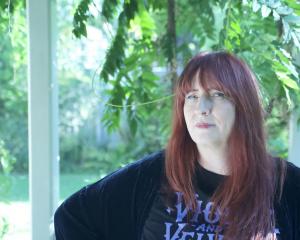
Produced in association with the Film Archive, this new book typifies the big, beautiful illustrated cultural histories that Te Papa Press does so well. Sturdily bound and printed on heavy-grade paper, its 350 pages offer the browser tactile delights that no e-reader can match.
Colour photographs and ephemera, full-page bleeds from movie stills, period posters and one-page breakouts on highlighted actors, directors, producers or industry bodies ensure a comprehensive coverage while stimulating the senses.
If you find many films familiar, that is because, as Frank Stark notes in the preface, more than 90% of the feature films shot in New Zealand have been made since Goodbye Pork Pie hit our screens in 1981.
Eleven authors contribute a meaty introduction and 11 chapters. Pivac and her crew (supplemented by another dozen or so writers of the break-outs) have organised the book chronologically, though sometimes subdividing the eras by film type - fiction and non-fiction between the wars get separate chapters - and Geraldine Peters examines political and alternative film-making mainly around the National Film Unit during the 1940s.
In the first chapter, military historian Chris Pugsley explores the origins of local film-making.
Our first motion pictures date from the mid-1890s and were overwhelmingly documentaries, covering events such as Maori gatherings, our contingent at Queen Victoria's diamond jubilee in London in 1897, royal visits, disasters such as the wreck of the Tyrone at Taiaroa Head and of course, World War 1.
Docos dominated the interwar era, enlivened by a few el-cheapo local productions filmed formulaically by travelling commercial film-makers who used unpaid locals as actors.
While the 1940 centennial and war coverage boosted our documentary-making skills to world class, pitifully few full-length fictional movies were made before the 1970s. Broken Barrier (1952, Roger Mirams and John O'Shea) was a rare exception.
That all changed from the 1970s and the 1980s, as New Zealanders turned out large numbers of short and full-length films. Some, like Battletruck (1982) were awful, but films such as Goodbye Pork Pie, Sleeping Dogs, Smash Palace, Came a Hot Friday, Ruby and Rata and Ngati entered the small Kiwi film canon.
Some of the big issues addressed by authors include censorship, government patronage, the portrayal of Maori, whether Sam Neill is right when he said in Cinema of Unease that our films are distinctively bleak and whether Peter Jackson-style international blockbusters can even be considered New Zealand films.
Two things stand out. The first, already noted, is the recent nature of our feature film industry. Most of the readers of this review will have lived through this remarkable renaissance.
Unlike British or United States cinema buffs, we have no distant golden age to haggle over.
The second is film's dependence on the State. Whether you look at the Department of Tourist and Health Resorts' pioneering work in the early 1900s, Labour's support for the National Film Unit 30 years later, the Muldoon-era tax loophole or last year's deal with Warner Brothers, this most commercial of arts really only thrives with public support.
The editing quality of the book impresses, achieving a consistency of tone while balancing scholarly research and analysis with good plain English. Proofreaders have missed the occasional missing word.
HMS New Zealand should not have been called a battleship and a battlecruiser in the same paragraph, but blemishes such as these are minor and rare.
Indeed, so good is the book that the accompanying DVD of one-minute and two-minute excerpts from many of the movies seems almost disappointing.
• Gavin McLean is a Wellington historian.












